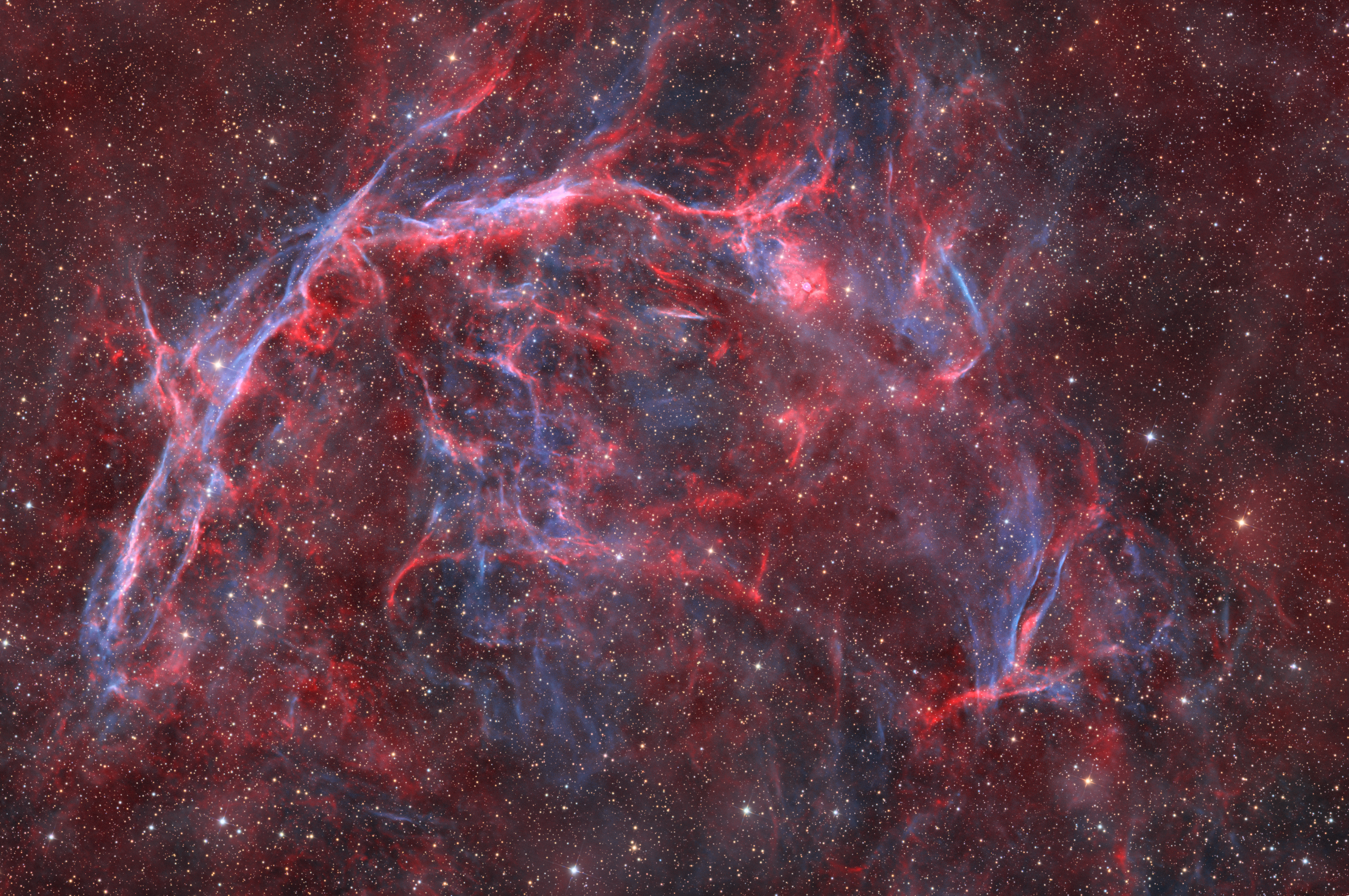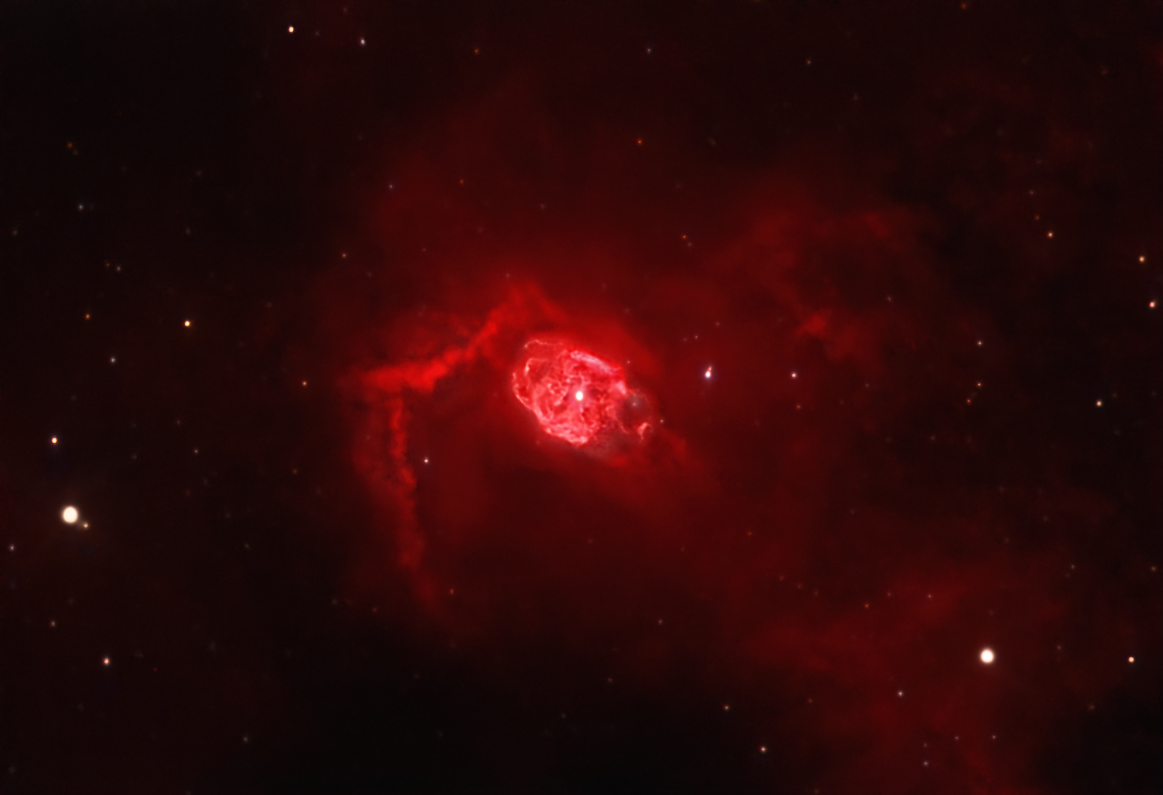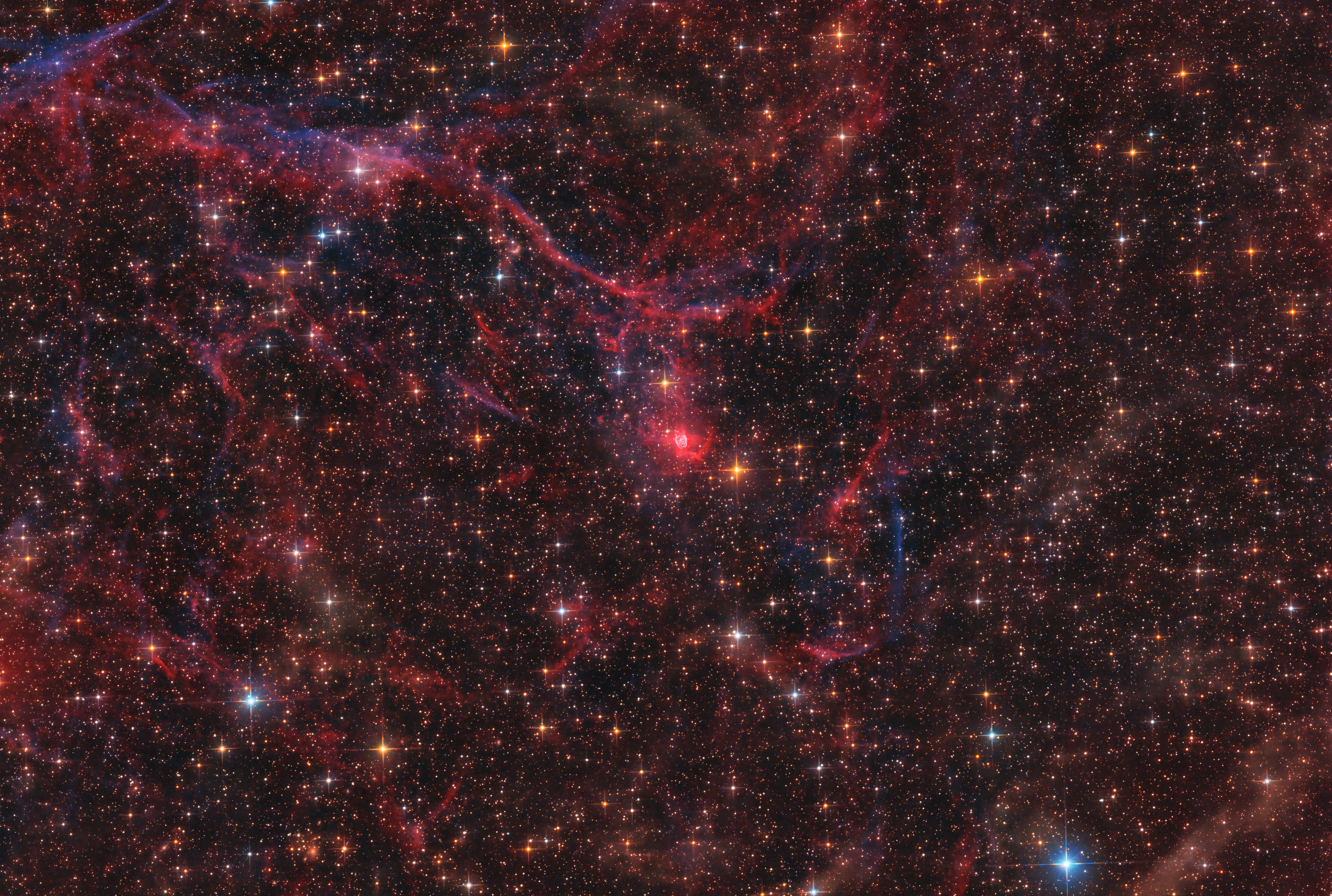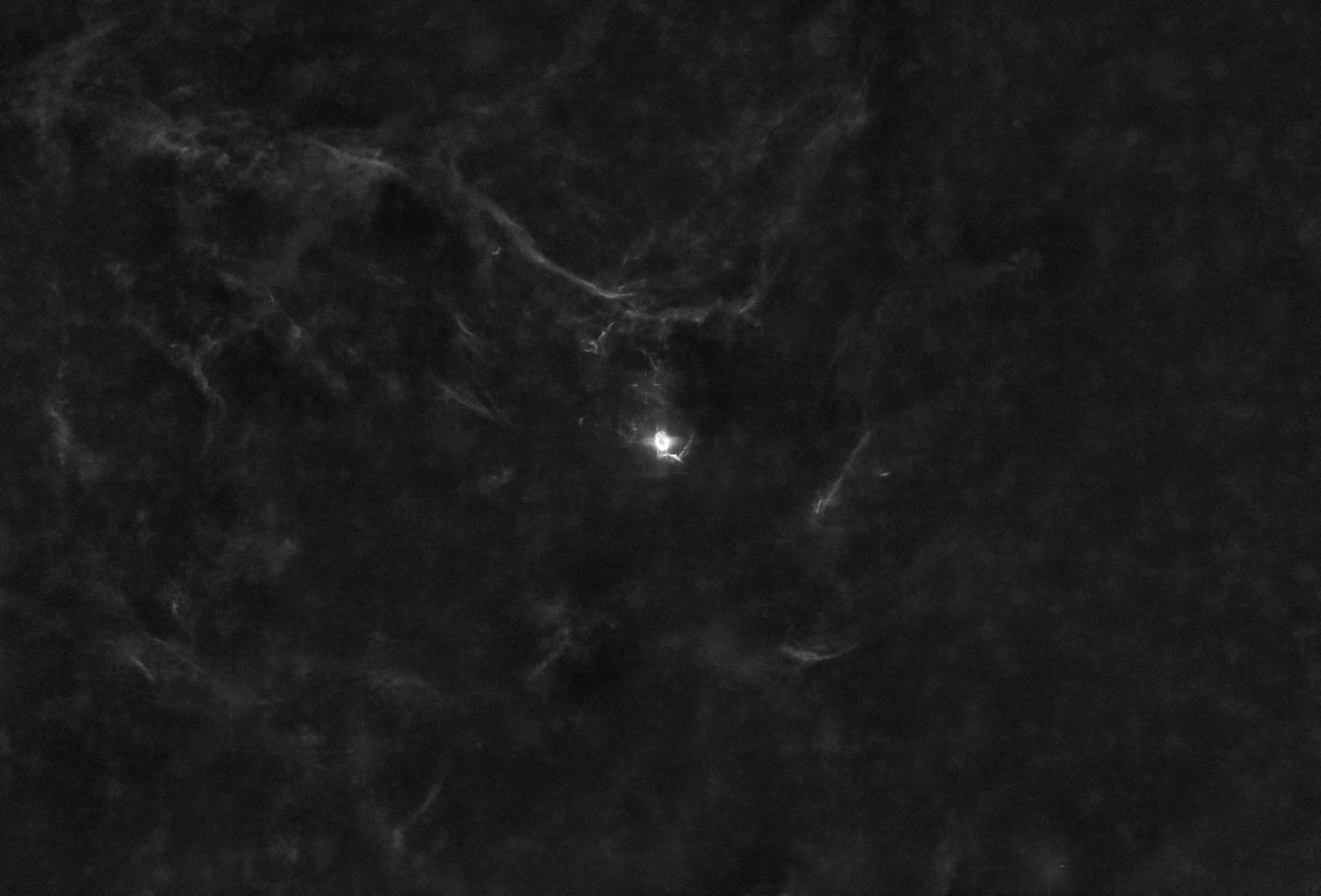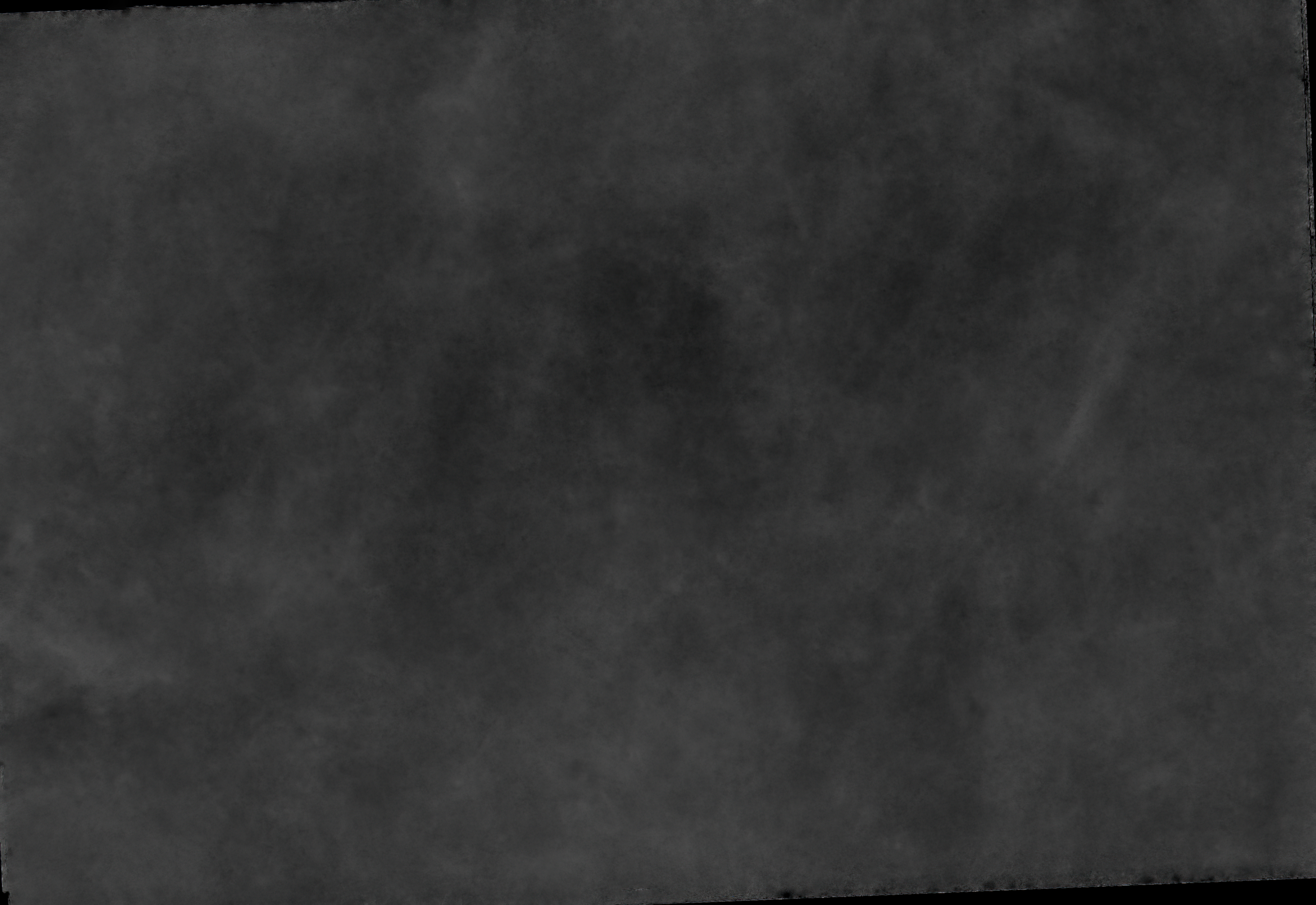
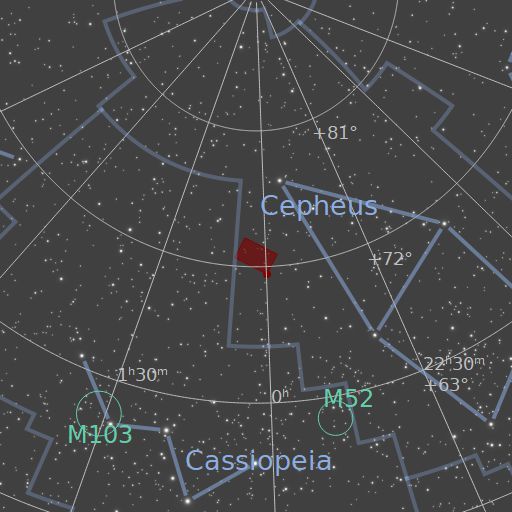
CTA1 - with a close look at NGC 40
CTA1 is a very dim supernova remnant located within the constellation Cassiopeia, approximately 4600 light-years away. This celestial object has garnered substantial attention from astronomers due to its complex structure and puzzling characteristics.
A point source within CTA1 was presumed to be a pulsar. However, despite these expectations, no radio pulses were ever detected. This was until NASA's Fermi Space Telescope uncovered that it pulses at gamma-ray energies. This peculiar source marks the inaugural discovery of a unique class, named "dark pulsars" (rotating neutron stars that exclusively emit pulses in the form of high-energy radiations). These dark pulsars might elude detection in radio or visible light if their emissions are confined to a narrow beam, that is unseen from Earth. The study of gamma-ray properties exhibited by pulsars offers invaluable insights into the physics governing the emission regions on neutron stars. The position of the "dark pulsar" is shown in the first annotated image (PSR J0007+7303)
A little right from the center of the image lies the planetary nebula NGC 40. One of the remarkable features of NGC 40 is its bipolar structure. The nebula's lobes extend symmetrically in opposite directions, forming a visually striking bow-tie shape. This distinctive morphology is believed to result from the complex interplay of stellar winds and magnetic fields during the star's evolution. The shaping of planetary nebulae, including NGC 40, remains an area of active research, as astronomers seek to unravel the underlying mechanisms responsible for their diverse forms.
The goal in creating this image was to combine the advantages of short and long exposures. Thus, in the case of NGC 40, to achieve good sharpness, only 0.5s per image were exposed. The sharpened image was then combined with the long exposures in HAlpha.
Photographed from Schriesheim and Bamberg, Germany under Bortle 5 conditions.
-
Category
Supernova remnant / Planetary nebula
-
Coordinates
RA 00h 13m 0.1s
DEC +72° 31′ 19″ -
Distance
~4.600 ly (CTA1)
~3.500 ly (NGC 40) -
Apparent Mag
11.6 mag (NGC 40)
-
Equipment
150mm f/2.8 Hypergraph
TS ONTC 208/800
Dobson 305/1500mm Skyliner FlexTube
CEM70G
Skywatcher AZ-EQ6 GT
ASI 178 MM
QHY 294m pro
-
Exposure
Ha: 422 x 300 s
OIII: 300 x 300 s
L: 100 x 180 s
L: 28800 x 0.5s
R: 50 x 180 s
G: 50 x 180 s
B: 50 x 180 s
Total Integration: 76.7 h -
Publication Date
02.11.2023
